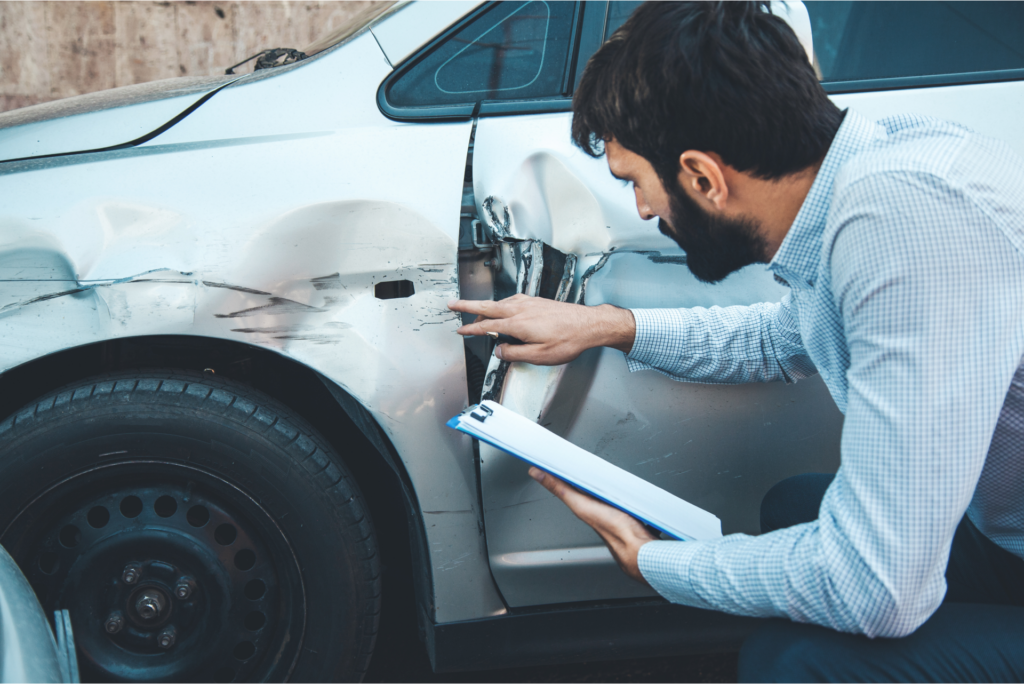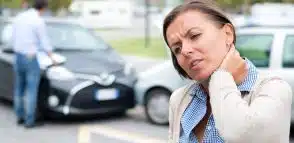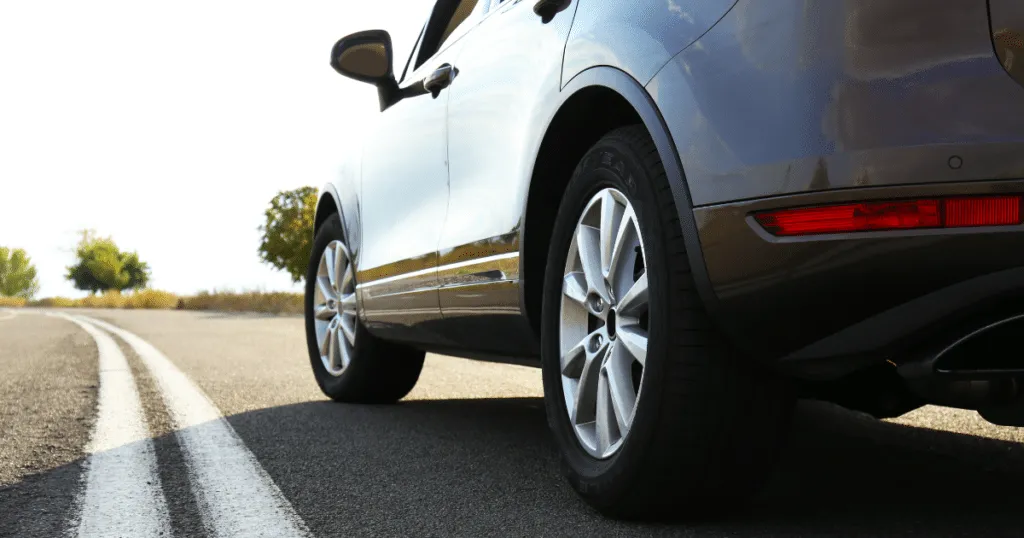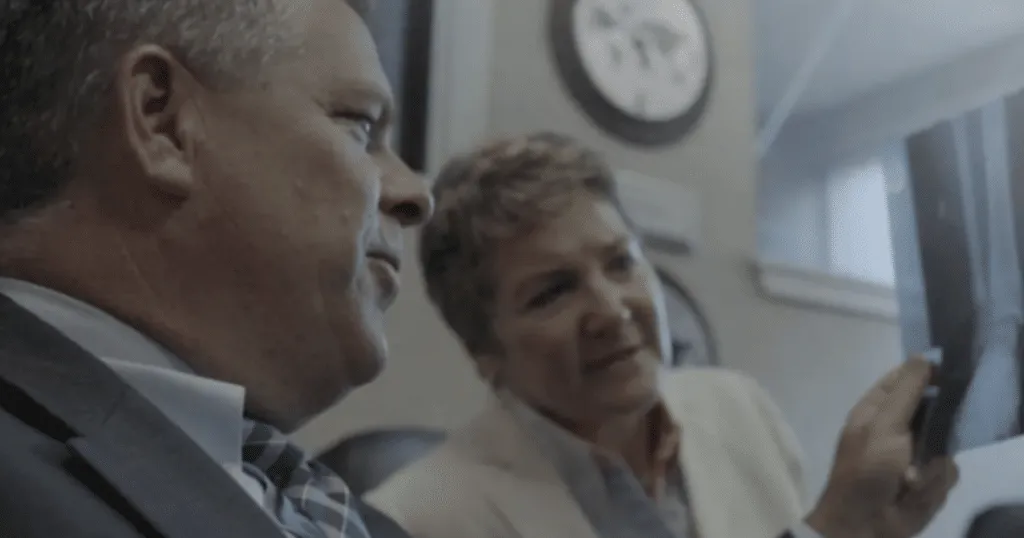
Determining fault is a critical task in dealing with the aftermath of a car accident. This procedure has far-reaching implications for legal and insurance outcomes. Determining who is at fault for the accident involves more than just assigning blame. It plays a crucial role in determining the financial and legal implications for all parties concerned. Achieving a just resolution requires an understanding of the importance of fault determination, whether navigating insurance procedures or pursuing a legal claim.
Analyzing the location of damage is a crucial step in determining how an auto accident happened. The dynamics of the collision can be better understood by closely examining the individual areas of impact. This analysis plays a crucial role in assigning blame by providing a detailed understanding of the accident’s course.
After establishing the significance of fault determination and introducing the concept of damage location analysis, let’s delve into understanding different vehicle damage patterns. This exploration is crucial in deciphering the complexities of various collision types. In this blog, we explore the intricate process of fault by locating the damage to the vehicle.
Analyzing Different Types of Collisions
Car accidents manifest in diverse ways, each with distinct characteristics that leave a unique imprint on the vehicles involved. Accurately determining fault in a car accident becomes dependent on an understanding of these patterns. We will examine the different types of car accidents and the consequences of damage in the sections that follow.
Rear-end Collisions and Damage Implications
Rear-end collisions, a prevalent type of accident, typically result in specific damage patterns. The most common damage includes damage to the rear bumper, trunk, and sometimes the frame of the vehicle. These collisions often occur due to sudden stops or distractions. Analyzing rear-end collision damage is essential for establishing fault, as it helps reveal the party responsible for not maintaining a safe following distance.
Side-impact (T-Bone) Collision Damage
Side-impact collisions, commonly known as T-bone collisions, introduce a different set of damage characteristics. Damage is concentrated on the side panels and doors, showcasing the point of impact. This type of collision often occurs at intersections and can be complex in terms of fault determination. Analyzing the extent and location of the damage on each vehicle involved is crucial in understanding which party failed to yield or violated traffic rules.
Characteristics of Head-On Collision Damage
Head-on collisions present a distinct set of challenges in fault determination. The damage patterns resulting from a head-on collision offer crucial clues in understanding how the accident occurred. Front-end damage is prevalent, and the severity depends on the speed of the vehicles involved. This type of collision often results from one vehicle crossing into the opposing lane. Analyzing the extent and nature of the damage can provide insights into which driver was likely at fault.
Steps to Document and Analyze Damage Post-Accident
After investigating the dynamics of various collision types and their damage patterns, the next critical step in determining fault is to document and analyze the aftermath of a car accident.
Effective Documentation Strategies
Accurate documentation is the foundation of a successful fault-determination process. Collect all relevant information, including driver details, insurance information, and witness accounts. Document the scene’s conditions, such as weather and road conditions. A thorough record ensures that you have the necessary details to support your version of events.
Tips for Accurate Photographic Evidence
Photographs serve as invaluable evidence in reconstructing the accident. Take clear pictures of the entire accident scene, focusing on vehicle positions, traffic signs, and any skid marks. Capture close-ups of the damage to each vehicle from multiple angles. A visual record provides a comprehensive view of proving fault, aiding both insurance claims and legal proceedings.
Initial Assessment of Damage for Fault Analysis
Immediately following the accident, conduct an initial assessment of the damage sustained by each vehicle. Note the specific areas of impact, structural damage, and any visible injuries. This initial assessment provides a preliminary understanding of the collision’s dynamics, laying the groundwork for a more in-depth fault analysis.
DO I HAVE A CASE?
If you think you may have a case, contact us now for a FREE consultation
"(Required)" indicates required fields
Legal Implications of Damage Analysis
In legal proceedings following a car accident, the location of damage becomes a critical element in constructing a compelling narrative in a car accident case. Car accident lawyers use specific details of damage to support their client’s version of events. For instance, in cases of rear-end collisions, front-end damage to the striking vehicle may strengthen the argument that the driver failed to maintain a safe following distance. Conversely, the rear vehicle with rear-end damage might indicate sudden braking or other contributing factors.
Impact of Damage Analysis on Insurance Claims
Insurance claims hinge on the accurate assessment of damages incurred during a car accident. The location and extent of damage play a central role in determining coverage, liability, and compensation.
When filing an insurance claim, the documentation of damage becomes the basis of the process. Insurance adjusters rely on these details to evaluate the extent of the loss and determine liability. Understanding the nuances of damage location analysis equips claimants with the tools needed to present a compelling case to their insurance provider.
In instances of disputes or contested claims, a thorough analysis of the damage can serve as a crucial point of reference. The evidence provided, including photographs and expert assessments, can strengthen the claimant’s position and facilitate a fair resolution.
Advanced Techniques in Accident Reconstruction
Modern technology has revolutionized accident reconstruction, providing investigators with powerful tools to analyze and recreate the dynamics of a collision. These advancements not only enhance precision but also contribute to a more comprehensive understanding of the factors at play.
3D Modeling and Simulation Use
Advancements in 3D modeling and simulation have transformed accident reconstruction, allowing investigators to create virtual representations of the accident scene. This technology enables a detailed analysis of vehicle movements, speeds, and impact angles. With a three-dimensional reconstruction, investigators gain valuable insights that contribute to a more accurate determination of fault.
Forensic Analysis Techniques
Forensic analysis techniques, including engineering analysis and biomechanics, are integral components of accident reconstruction. Engineers and forensic experts examine the physical evidence, such as tire marks, vehicle deformation, and road conditions, to piece together the events leading to the accident. These sophisticated analyses provide a scientific foundation for fault determination and can be crucial in legal proceedings.
Collaborative Analysis and Resolution
Effective communication among all parties involved is vital in ensuring a thorough analysis of the accident. This includes open dialogue between drivers, insurance representatives, legal professionals, and any other relevant stakeholders. Collaborative communication facilitates the exchange of information, clarification of details, and a holistic perspective that aids in reaching an agreement on fault determination.
Involvement of Law Enforcement and Expert Witnesses
The active involvement of law enforcement is often instrumental after a car accident. Their role extends beyond the immediate response to documenting the scene, gathering witness statements, and creating an official report. Law enforcement’s unbiased perspective and trained eye contribute significantly to the overall understanding of the accident.
Expert witnesses, including accident reconstruction specialists and forensic analysts, bring a wealth of knowledge to the table. Their insights, based on scientific principles and specialized training, provide an additional layer of expertise to the fault determination process. Collaborating with these professionals enhances the accuracy and credibility of the analysis, offering a more robust foundation for legal and insurance proceedings.
How Marasco & Nesselbush Law Offices Can Help
Navigating the aftermath of a car accident can be overwhelming, especially when determining fault involves complex damage analysis, legal intricacies, and insurance processes. Marasco & Nesselbush Law Offices offers comprehensive support to victims seeking justice and fair compensation.
Our experienced legal team excels in fault determination, utilizing expertise in damage analysis, insurance procedures, and legal advocacy. We assist clients in gathering meticulous documentation, facilitating effective communication with stakeholders, and collaborating with expert witnesses to strengthen their cases.
Our commitment extends to tireless legal advocacy, ensuring clients are represented robustly in negotiations and court proceedings. Our goal is to provide our clients with the necessary tools to handle the aftermath of a car accident with assurance and confidence, with a focus on maximizing compensation for medical costs, missed income, and other losses.
If you’ve experienced a car accident and need expert guidance in determining fault, securing fair compensation, and handling legal complexities, our experienced car accident attorneys at Marasco & Nesselbush Law Offices are here for you. Contact us today for a consultation and take the first step towards a just resolution.
Contact Our Rhode Island Car Accident Lawyers Today
If you or a loved one has been injured due to someone else’s negligence, don’t wait. Marasco & Nesselbush injury attorneys take pride in navigating the entire legal process with you. While you may be focused on physical injuries and regaining your health, we will work to get you the compensation you deserve.


